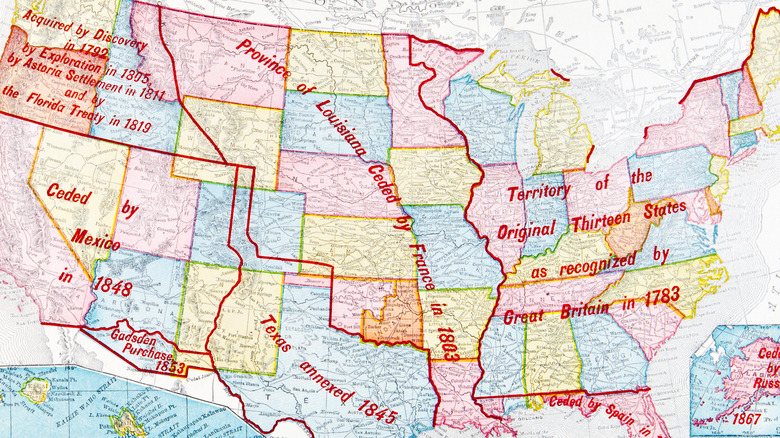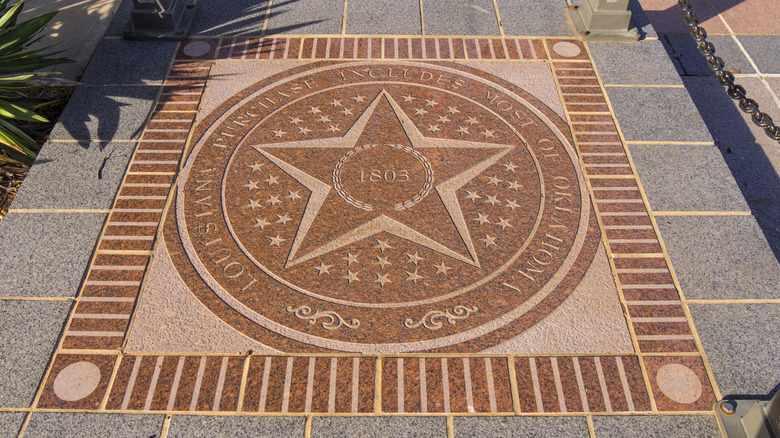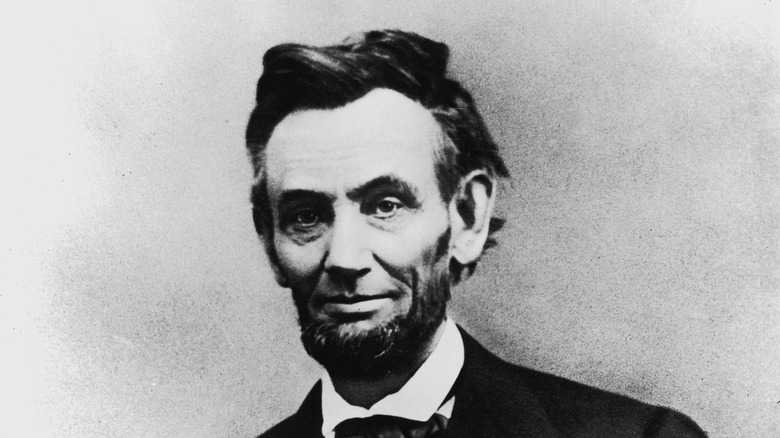How The Louisiana Purchase Led To The Civil War
Historic acts do not happen in a vacuum, and neither do acts of nations. Such is the case with the Louisiana Purchase of 1803. In the early 1800s, Louisiana actually was a parcel of land that covered most of the Mississippi Valley, not the state that we know today (via National Geographic). What came to be called the Louisiana Purchase started out as an effort by the young United States of America to purchase the important port city of New Orleans from France. France had other ideas and, for $15 million, offered the entire Louisiana territory to the new nation. President Thomas Jefferson was only too happy to accept the offer.
One of the first implications of this purchase was that the fledgling United States vastly expanded its territory. Out of the Louisiana Purchase, the following states were carved: Arkansas, Iowa, Missouri, and Oklahoma. Portions of Colorado, Kansas, Minnesota, Montana, North Dakota, South Dakota, and Wyoming were formed from lands acquired in the purchase. Of course, the United States also got the state of Louisiana.
However, this land expansion was either good or bad, depending on which side one was on.
Continuous sectional compromises lead to war
One cannot forget that the United States was plagued by the institution of slavery. Slavery usually elicited strong partisan sentiment along sectional lines. Those in the North decried it, while states in the South, dependent on an agricultural economy, claimed it was necessary. With the expansion of land from the Louisiana Purchase, the question now was which either territories or states shall allow slavery and which shall be free (via BlackPast).
Congress made a series of compromises to try to keep the peace over the contentious slavery question. The first of these was the Missouri Compromise of 1820. (via U.S. History) This called for the admission of Missouri as a slave state, the admission of Maine as a free state, and banned slavery in any new state formed from land acquired in the Louisiana Purchase north of the southern border of Missouri.
By 1850, this first compromise was not holding and thus, a new compromise — the Compromise of 1850 — was passed. As the name implies, both North and South won some and lost some. However, the most contentious legislation to come out of this was the passage of the Fugitive Slave Act (via U.S. History). This act stated that if a slave escaped into free territory, citizens of those areas had to either apprehend the slave and help return him or her to captivity or be deputized by slave-catchers to help capture escaped slaves. Many in the North simply did not comply with this act.
No compromise kept the peace
The careful balancing act of what was then the United States all but crumbled with the passage of the Kansas-Nebraska Act. (via U.S. History) This act nullified the Missouri Compromise and gave states north of 36°30' the right to choose whether they wanted to be slave or free, regardless of the balance of slave and free states.
The passage of the Kansas-Nebraska Act led to the creation of the Republican Party. In 1860, the Republican Party's Abraham Lincoln became the first member of that party to win the election to the presidency. Many in the South feared that the election of Lincoln would mean that the Republicans would try to outlaw slavery across the nation. Out of this fear, South Carolina became the first state to secede from the Union (via Library of Congress). Initially, seven other states followed suit. These states called themselves the Confederate States of America. The issue of secession came to a head and an all-out war for national survival — the Civil War — began on April 12, 1861, with the bombing of South Carolina's Fort Sumter.


